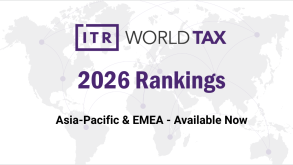Although the arm's length principle is based on a direct comparison with market prices, in practice the arm's length nature of intercompany transactions is often assessed indirectly by considering the resulting profitability. In times like these, with high inflation, supply chain disruptions, profound changes in public spending and many other external drivers, economic developments affect the profitability of legal entities within a multinational company in various ways .
To properly apply profit-based TP methods, it is important to understand exactly how these economic developments interplay in order to ensure that a change in profitability is not misinterpreted as an indication that TP is not arm's length. In this article we provide examples of the impact of such economic developments on the life sciences and healthcare (LSHC) industry and illustrate potential TP implications.
Fallout
Just as the economic fallout of the pandemic began to ease in early 2022, the Russian invasion of Ukraine triggered a new economic crisis due to the psychological shock, rising uncertainty, far reaching sanctions and energy shortages on parts of Central and Eastern Europe.
This economic turmoil led to skyrocketing energy and commodity prices and once again disrupted supply chains. These effects further increased inflationary pressures in many countries around the world during 2022, so that inflation in the EU peaked in October at a monthly rate of 11.5% of the Harmonized Index of Consumer Prices, the highest rate in decades. In this difficult economic climate, the European economy only narrowly avoided recession with 0.1% economic growth in the first quarter of 2023.
For the life sciences and healthcare (LSHC) industry, these economic and political circumstances were a significant challenge, after previously dealing with the effects of the COVID-19 pandemic. Parts of the industry, such as over the counter and in-hospital medicines faced a sharp drop in demand because of lockdowns and the postponement of non-COVID-19 care, while the manufacturers of the COVID-19 vaccines and personal protective equipment were unable to serve the exceptionally high demand. At the same time, protectionist tendencies and ongoing lockdowns caused major problems in the supply chain and many companies faced high transport costs and a tight labour market, resulting in staff shortages. For these reasons, according to the Economist, the global sales of pharmaceuticals increased by just 2% in 2020.
After a partial recovery of the LSHC industry in 2021, the Ukraine crisis in 2022 led to a sharp increase in raw material and energy costs, and companies in parts of Europe were faced with mandatory measures to reduce energy consumption. At the same time, the ability of LSHC companies to pass on higher input costs was limited by price setting rules, such as rebate schemes and reference prices, as well as ongoing initiatives by several governments. Notably, the Biden administration, the European Commission and China lowered drug prices or reduced the period of market exclusivity for new drugs.
In addition, various countries have initiated reshoring programmes for parts of the pharmaceutical production, but these policies could also reverse some of the benefits of global trade by reducing the cost savings of importing pharmaceutical ingredients.
The very challenging economic climate of recent years has affected the various subsectors of the LSHC sector in different ways. Some pharmaceutical companies benefited from the stockpiling in the pre-lockdown periods and the successful roll-out of the covid vaccines, although at the same time sales of non-covid care declined. Manufacturers of generics, on the other hand, saw their growth come to a halt during the pandemic due to supply-chain disruptions and were hit hard by sharp increases in energy and raw material costs. Finally, while medical technology companies were challenged by rising energy costs and supply chain problems, many companies still showed solid revenues and profit margins in 2022.
The economic situation and related challenges have had a significant impact on the overall profitability of multinational groups within the LSHC sector. In many cases this has TP implications, as the allocation of operating profits between legal entities in different jurisdictions resulting from the underlying TP system is affected. This, in turn, questions whether profit-based TP approaches applied within an LSHC multinational group need to be adapted in order to ensure continued compliance with the arm’s length principle during economic turmoil.
In the following, we provide examples of the impact of the described economic developments on the LSHC industry and illustrate potential TP implications. In particular, the focus of this article is on pharma, generics and MedTech multinationals within the LSHC industry given their global business models and resulting TP challenges.
As the examples will show, to assess the impact of economic developments on multinational life science companies from a TP perspective, it is important to understand the specific characteristics of the industry.
Example 1 – equipment vs. service business in the medical technology sector
One particularity of the medical technology sector is that many companies have business models under which they earn revenues from multiple, complementary offerings.
For instance, for medical devices, revenues can stem from selling products but also providing complementary services to customers, e.g. maintenance services that ensure the products remain operational. Also, in the case of diagnostic devices, not only are testing devices provided to customers but also the reagents needed to conduct the tests.
Generally, the profitability of the income streams can differ significantly. While the upfront sale of the device may have a low (or even no) profitability, the service business is typically profitable. Also, in the case of diagnostic devices, the devices can be either seeded or rented at low cost, while money is earned with selling reagents/ tests to the clients.
Another feature of these markets is that the initial sale or provision of the device is a one-off transaction, whereas the subsequent provision of services/reagents is recurrent. Typically, demand for the initial transaction can be elastic (hospitals can choose to buy a new device or continue to use the old one) whereas the recurrent demand for services/ reagents is rather inelastic: once devices are installed, they need to be serviced regularly to remain operational and diagnostic devices cannot be operated without using reagents.
In such markets, economic turbulence can have the following effect on profitability. If we consider an entity that sells products and provides complementary services, a drop in demand would imply that the sales of new devices may drop. At the same time, due to lower demand elasticity, service sales would remain rather constant.
Overall, the revenues of the entity would decrease. However, the relative revenue share of the service business increases.
If we assume that transfer prices remain constant, the following would be observed in an economic downturn: due to the demand-side effects outlined above, the (relative) profitability of the entity would actually increase. This may seem counterintuitive, as usually declining revenues are associated with declining profitability. However, in the life science industry the opposite may hold true – even if no changes to the underlying TP system were implemented. Thus, any change in profitability that can be observed should be analysed carefully, and no hasty conclusions should be drawn as to whether the change in profitability has its root cause in TP.
Example 2 – effects of inflation on pharma and generics manufacturers
For pharmaceutical companies, costs are generally an important competitive factor, for generics manufacturers even more so. Manufacturing costs, input prices as well as prices for active ingredients have soared recently. However, due to the particularity of the life sciences industry with largely regulated prices, such cost increases cannot always be passed on to consumers easily.
Many countries around the world regulate the prices of medicines. The methods of price control mechanisms used vary widely, but common are reference pricing schemes where the fixed price for a medicine is derived from the price of the same medicine in other countries (external reference pricing) or from the price of a pool of therapeutically comparable medicines in the same jurisdiction (internal reference pricing). In addition to reference prices, value-based pricing and rebate schemes are also widely in use. The value-based pricing approach aims to set prices for medicines based on the estimated value of the medicine to patients and the health system. Rebate systems, however, are a more indirect form of regulation as pharmaceutical companies and the national health systems or health insurances typically negotiate directly on discounts from the official list price. Often, the different price regulations are combined.
In Germany, for example, pharmaceutical companies are free to set the market price at launch for the first year, but German law requires a formal assessment of the “added therapeutic benefit” of the new drug. If the new drug offers a benefit over comparable medicines on the market, a reimbursement price is negotiated between the pharmaceutical company and a joint association of the health insurers based on the prices of appropriate comparators. If no benefit is found, the new medicine is placed in a reference price cluster with other comparable drugs and a fixed price is set.
The German example shows that the freedom of the companies to set prices is considerably restricted, so that in the event of rapidly rising input costs and supply chain disruptions, the ability of the companies to pass on the higher costs is limited. As a result, the supply of some drugs, particularly those for children was recently at risk in Germany. Therefore, the government suspended the fixed prices and rebate schemes for medicines for children and reduced some other price control mechanisms.
Given such challenges, life sciences companies, especially manufacturing companies, are currently facing questions around the TP implications for multinational groups. If the overall profitability of a group is adversely affected, it generally depends on the underlying intercompany system to determine which group entities are affected and how. In intercompany set-ups, production is often performed by companies acting as routine manufacturing entities, either contract or toll manufacturers. Such entities with a limited functional and risk profile, should, from a TP perspective, earn a low but stable margin. This would generally also apply in times of high inflation and generally shelter the routine entity from significant business risks. Routine entities hence typically receive a cost-based remuneration, often with fixed mark-up on costs.
Regarding such TP mechanisms, higher input and/or production costs lead to a higher cost base at the level of such routine manufacturers. This would result in higher profit levels for the routine manufacturers if mark-ups are fixed and price adjustments are performed based on actual figures. Thus, the routine entity would benefit from such adverse cost effects.
It seems questionable whether third parties in similar situations would continue their business relationship on this basis or rather agree on lower mark-ups to share the adverse economic impact to a certain extent. The OECD in its Guidance on the TP implications of the COVID-19 pandemic (OECD COVID Guidance), which can be seen as a precedent of how to analyse extraordinary circumstances from a TP perspective, acknowledges that: “…it is important to consider any changes in the economically relevant characteristics, including the terms and conditions of the agreement, and whether at arm’s length, unrelated parties would have tried to renegotiate those terms and conditions.”
Moreover, according to the OECD COVID Guidance, it may be that any provisions for extraordinary circumstances such as force majeure clauses would be invoked by third parties in such situations:
“…the determination of whether this renegotiation is arm’s length should be based on what independent parties would do under comparable circumstances and if there have been situations at arm’s length where contractual terms have not been enforced, or have been amended, this may form reasonable evidence for taxpayers to justify revised terms in intra-group agreements where the situations are comparable.”
Hence, following the OECD, in times of economic turmoil, a careful analysis of how (in a third-party context) companies would deal with such increased input costs and split the resulting burden may be warranted.
Summary
As illustrated, extraordinary economic circumstances can have an impact on LSHC companies in a different way to companies in other industries. Moreover, the effects – such as having declining revenues and increased profitability – may appear counterintuitive but, from an arm’s length perspective, should not in all cases necessitate a change in the underlying TP mechanism. Therefore, when applying profit-based TP methods, it is important to analyse and document the specific factual background in detail to support the arm’s length nature of the applied transfer prices.













